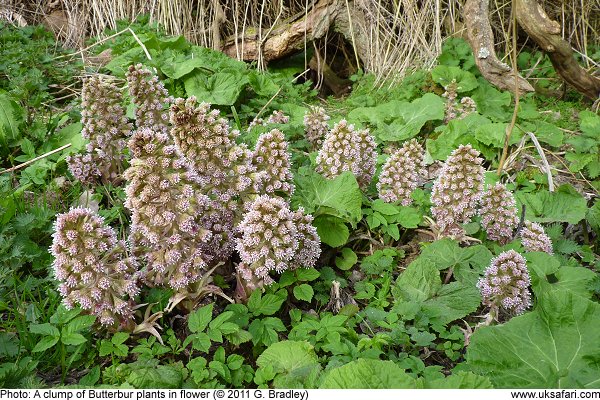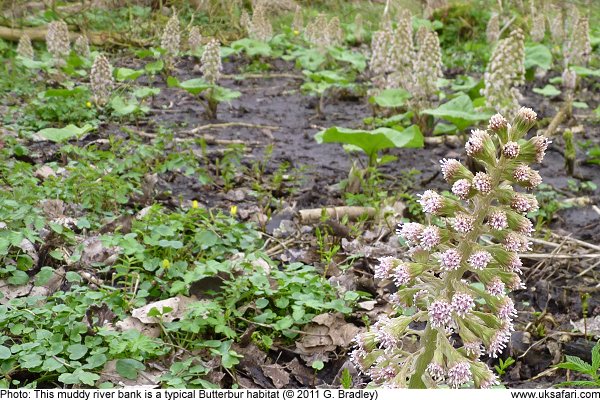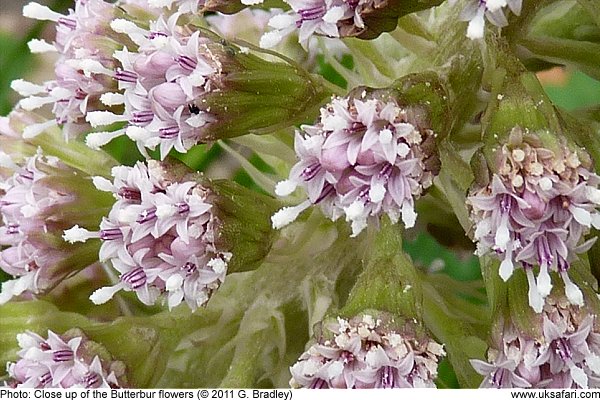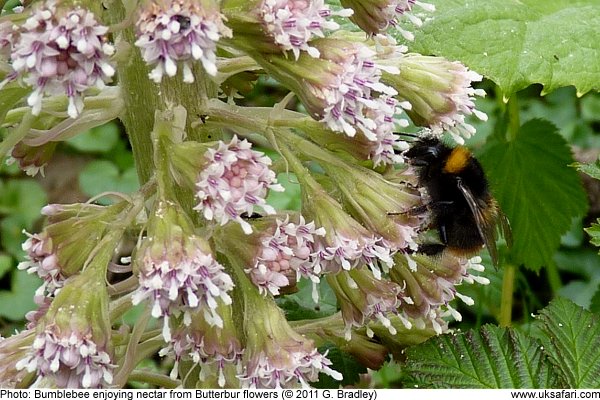 Quick Facts
Quick Facts
Scientific name: Petasites hybridus
Size: Grows to a height of 70cm
Distribution: Found throughout the U.K.
Flowering Months: March to May
Habitat: Found mostly in damp wooded areas, especially around the edges of ponds, lakes and streams
Special features: The butterbur is a member of the daisy family. It's huge leaves can grow to 100cm across, and years ago people used to wrap butter in them, hence the common name for this plant. During the middle ages, the roots were used to remove skin blemishes. The butterbur flower spikes are popular with early bumblebees. The flowers are a pale purple colour, and male and female flowers grow on separate plants.
There is also an invasive species called white butterbur (Petasites albus). It is a native of mountainous parts of Europe and South West Asia and was introduced to the UK in the late 1600's. The flower heads tend to be more spherical and the leaves are much more pointed.
 Related Pages
Related Pages

 Popular Pages
Popular Pages
Amphibians, Bats, Badgers, Beetles, Birds, Birds of Prey, Bumble Bees, Butterflies, Caterpillars, Creepy-Crawlies, Deadly Spiders, Dolphins, Dragonflies, E-Postcards, False Widow Spiders, Free Newsletter, Frogs, Fungi, Garden Spiders, Glow-Worms, Grey Squirrels, Hedgehogs, House Spiders, Ladybirds, Mammals, Marine Mammals, Moths, Owls, Reptiles, Spiders, Toads, Trees, Wildlife Hospitals
Copyright © 2020 G. Bradley UK Safari. All rights reserved | About Us | Links | Contributors


 Butterbur
Butterbur





